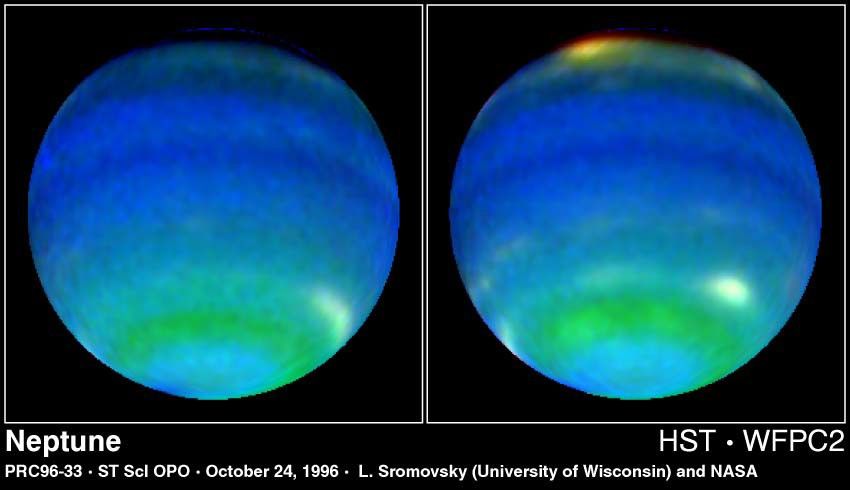NASA's Hubble Space Telescope has been used to assemble a time-lapse color movie showing a full 16-hour rotation of the distant planet, Neptune. The movie, made from a series of Hubble observations over nine consecutive orbits, allows astronomers to track cloud motion on the planet. The clear images show Neptune's powerful equatorial jet stream, immense storms, and dark spot in Neptune's northern hemisphere, first identified last year by a Massachusetts Institute of Technology team using Hubble.
The movie was made by a team of scientists led by Lawrence Sromovsky of the University of Wisconsin-Madison's Space Science and Engineering Center and were presented at the annual meeting of the Division of Planetary Sciences of the American Astronomical Society, in Tucson, AZ. The team combined observations from Hubble and NASA's Infrared Telescope Facility (IRTF) on Mauna Kea, Hawaii, to observe the distant planet in a variety of wavelengths, each providing a different set of information about Neptune's clouds, their structure, and how they circulate. Scientists can make more precise calculations of Neptune's wind speeds and directions, yielding refined information about the planet's dynamic weather system.
In addition to the movie, a still image is available to media representatives.





























